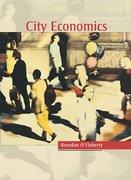4. In Queens, along Jamaica Avenue, peoples desired departure times are such that five people want to
Question:
4. In Queens, along Jamaica Avenue, people’s desired departure times are such that five people want to leave for Manhattan every minute during rush hour. People lose time if they have to wait or come early; they all value time lost the same way—at $.10 a minute—no matter whether it’s waiting time or coming-early time. It costs $25 for a big bus to make a trip to Manhattan, 112 5 ƒ Mass Transit and the bus can take a lot of people (it’s hard to tell the exact capacity because passengers can crowd in very tightly if they have to; they don’t mind).
A trip to Manhattan always takes 26 minutes.
a. If the Metropolitan Transit Authority (MTA) wants to minimize the total cost to society—the cost of operating the bus and the cost of waiting or coming early and the cost of being transported—how often should it run the buses? Nobody knows the timetable—as on the subway, passengers believe that buses arrive randomly. How many people will be on each bus? How much must the MTA charge to break even?
b. Suppose a small bus is available that can carry a maximum of 35 people.
A trip to Manhattan in this bus also takes 26 minutes, and it costs only $9 to operate the bus. If only small buses are available, how often should the MTA run them to minimize the total cost to society? If the small buses have to break even, how much must the MTA charge? If the MTA has a choice between only small buses and only big buses, which should it use?
Step by Step Answer:







